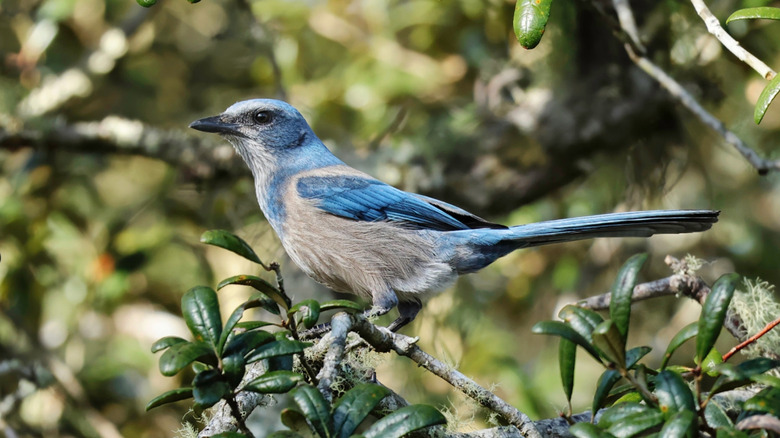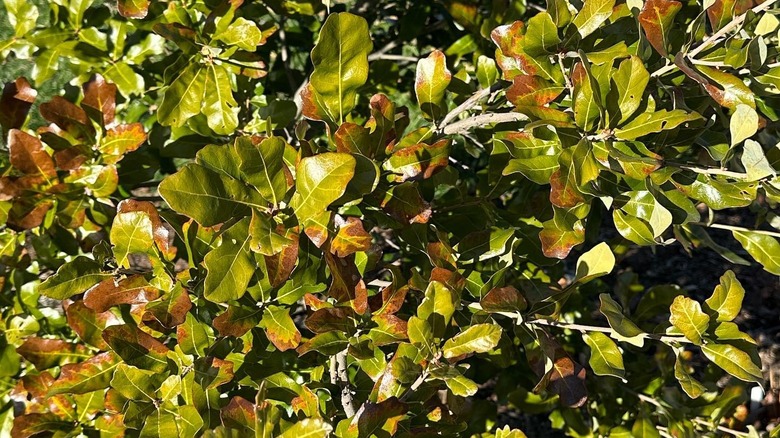The Smaller-Sized Oak Tree That'll Have Birds Visiting Year-Round
If you're a gardener with a small yard, it can seem like you don't have enough space to make a meaningful impact on local wildlife. However, with proper planning, you can add a surprising amount of wildlife habitat — even in the tiniest yard. Along with spruce and hawthorn, one of the best trees to plant in your backyard for bird-friendly winter habitat is the Chapman oak (Quercus chapmanii). Trees in the Quercus genus are among the most valuable keystone species everywhere they grow.
In addition to serving as a pollinator host plant, the Chapman oak offers shelter and an abundance of food for birds and mammals. Found in the Southeastern United States, this oak tree is perfect for small gardens in warmer climates because it's drought-tolerant and stays small. While they can occasionally reach heights around 20 feet, it's very rare. Most Chapman oaks will only grow to about 9 feet tall.
Planting just about any native oak in your yard is one of the best things you can do to support local wildlife, but if you don't have the space for a towering white oak or live oak, the humble Chapman oak can provide similar wildlife value without overwhelming your yard. Just make sure to plant this small tree in well-draining or dry soil, preferably in full sunlight.
Attract birds to your yard with a Chapman oak
Like the chestnut oak and the black oak, the Chapman oak is one of the best types of oak trees you can plant in your yard. The Chapman oak may be small in size, but it has enormous wildlife value. In fall and winter, birds use the long-lasting foliage as cover. They also feed on the acorns when other food sources have disappeared. Come spring, birds can feast on the dozens of insects that rely on the Chapman oak as a host plant.
Planting a single Chapman oak can help fill your garden with songbirds, butterflies, and other beneficial visitors throughout the seasons. It will also add year-round interest to your garden. These deciduous trees develop red and yellow fall colors and hold onto those leaves well into winter or even early spring. After a short dormant period, the Chapman oak will produce new growth later in spring. You can grow these multi-stemmed oak as trees by pruning away new shoots or allow them to form a thicket to act as a privacy screen.
It does best in zones 8 through 10 and prefers dry, sandy soils similar to that of the coastal dunes and dry inland forests it's native to. No soil changes are necessary, as it grows just fine in nutrient-poor environments. However, it helps to keep the area consistently moist for the first year or so while the tree's roots are established. After that, no additional watering or care is needed to keep this tree alive.

